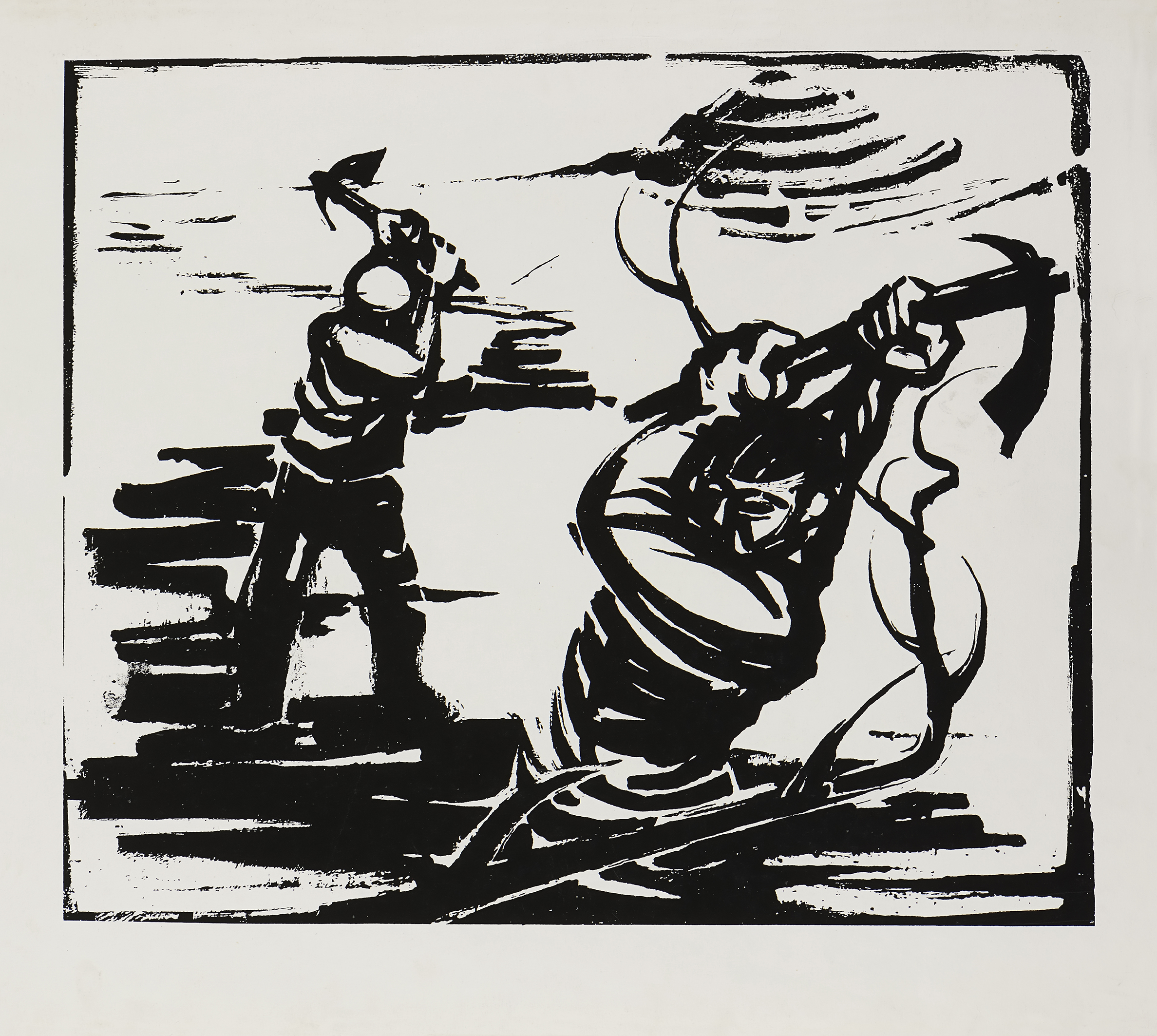Curator: Batia Donner
 In the 1950s, Gershon Knispel sought to focus on the instances where personal experience encountered collective experience. This perspective has characterized his art and the mediums that he has chosen to use throughout the years. Knispel is an artist dedicated to idea and to action. His art strives to present a moral viewpoint while stripping away the façade of clichés in order to focus on society and the individual who must endure the consequences of collective processes.
In the 1950s, Gershon Knispel sought to focus on the instances where personal experience encountered collective experience. This perspective has characterized his art and the mediums that he has chosen to use throughout the years. Knispel is an artist dedicated to idea and to action. His art strives to present a moral viewpoint while stripping away the façade of clichés in order to focus on society and the individual who must endure the consequences of collective processes.
Knispel's path of artistic and stylistic development began with his localized and synchronous outlook, which he broadened during his time spent in Europe in the 1950s. This thought process then crystalized into a diachronic viewpoint while Knispel was living in Brazil. Knispel's stylistic development and artistic mission illustrate how he has endeavored to join history and territory into a single meaningful entity.
This exhibition presents works on paper, mostly prints – some were created as autonomous works, others are illustrations for works by a few writers and poets, and most bear an affinity to works in other mediums, either as sketches for murals, reliefs and sculptures, or as a dialectic progression for works in other fields.
In the anthology Poems of a Generation, submitted as his final project at Bezalel (1954), Knispel presented “illustrated poems” – lithographs that used drawing and calligraphy in a dialogue with selected poems of protest.
A liberated, intuitive and erupting line characterizes the screen print album Along the Way, which the artist created in 1956 to poems by Alexander Penn. The drawings present two unique iconographic motifs that would eventually evolve in Knispel’s art: the image of the masses as collective entity and victim, which blurrs the distinction of the circumstances of suffering and oppression, and the figure of the cripple. After many years, these symbols reappeared in Knispel's monumental work The Four Carriages of Survival. He created this piece for the auditorium of the Ten Yad (Lend-a -Hand) organization in Sao Paulo (2009–2013).
Of the drawings Knispel did for Bertold Brecht’s poem Children’s Crusade, Willem Sandberg wrote: “brecht’s [sic] fire/burns today/here glows/shining black/on the snow/human and penetrating/drawing the shadow-light of the word/sharp and yet round/clever and smart/cautioning/ that’s what was gershon knispel trying to design in that book / – and the abyss.”
Historical memory became a stronger presence in the artist’s work after an encounter with the writer and Holocaust survivor Yehiel De-Nur, known by his pen-name Ka-Tsetnik, in 1966. This meeting was a landmark in his career, after which the representation of tragedy and injustice began to play an important role in his work. The Holocaust became, in a certain sense, a kind of ethical lens through which Knispel chose to examine and represent his surroundings in his monumental paintings, three-dimensional works, which he created for public spaces, and in the print series he produced in collaboration with the renowned architect Oscar Niemeyer.

